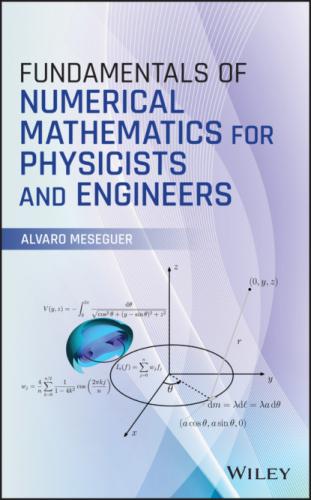7 7. (A) Applying Newton's method to a certain equation leads to the iteration , with . Find the original equation or, equivalently, find the purpose of such iteration and its corresponding limit .
8 8. (A) We apply Newton's method to solve starting from . How many iterations are required to obtain the root with an error of ? Solve the problem analytically. After that, verify your estimation numerically.
9 9. (A) For , find the value of the quantity Hint: is the limit of the sequence
10 10. (A–N) One technique to accelerate Newton's method for roots of multiplicity consists of replacing the original equation by the auxiliary one , where .If is a root of with multiplicity , find the limit .If the modified Newton's iteration using the auxiliary equation reads , find .If we use the original Newton's method to solve starting from , find the minimum number of iterations such that .Repeat (c) using the auxiliary equation.
11 11. (A–N) Steffensen's root‐finding method is given by the iterationStarting from the initial guess , apply the method to solve . What order of convergence can you identify?Solve starting also from . Do you observe the same exponent as in part (a)?(*) Find the exact order of convergence of the method for simple roots, as well as its corresponding asymptotic constant.
12 12. (A–N) Halley's13 root‐finding method is an algorithm that improves Newton's quadratic convergence when solving . In this case, the method solves the auxiliary equation , where and is assumed to be positive and differentiable within the domain containing the root.Find the resulting iterative formula in terms of , , and .Find the root of within using Halley's method starting from . Can you identify the order of convergence ?
13 13. (A–N) Dynamics and Kinematics: A trapeze artist is at rest on top of a platform of height (hollow circle A in the following figure) holding a rigid rod of length and negligible mass that can rotate around the fixed point O. The performer starts falling under the effect of gravity (dashed gray curve), passing through point at maximum speed without touching the ground. Later, the acrobat releases the rod when the angle it forms with the vertical axis is (point B). From point B onward, the artist traces a parabolic trajectory, finally touching the ground at point C, whose abscissa is . Neglect friction forces.Show that .Find the angle for which .What is the angle so that the acrobat maximizes the range ?Provide your numerical answers with at least four exact figures. Advice: for parts (b) and (c), consider the alternative equation
Notes
1 1 First obtained in the mid‐sixteenth century by the Italian mathematician Scipione del Ferro, inspired by the work of Lodovico Ferrari, a disciple of Gerolamo Cardano.
2 2 First derived by the German astronomer Johannes Kepler in 1609.
3 3 See Appendix H of Eisberg and Resnick (1985).
4 4 National Institute of Standards and Technology.
5 5 The etymology of the word is the name of the Persian mathematician and astronomer Al‐Khwārizmī‐ from the eighth century.
6 6 is said to be of Cauchy‐type if , such that .
7 7 Named after the English mathematicians Sir Isaac Newton (1642–1727) and Joseph Raphson (1648–1715).
8 8 This will be addressed in the second part of the book.
9 9 This approximation is crucial in Newton's method for systems of equations (Part II).
10 10 However, some texts consider the bisection method to be linearly convergent if one considers an upper bound of the error , so that .
11 11 The asymptotic constants of secant or chord methods have the same problem with double roots (see Exercises 1.3 and 1.4).
12 12 Also known as the false position method (see Exercise 1.6).
13 13 Edmond Halley, English astronomer who predicted in 1705 the orbital periodicity of the comet that now bears his name.
Конец ознакомительного фрагмента.
Текст предоставлен ООО «ЛитРес».
Прочитайте эту книгу целиком, купив полную легальную версию на ЛитРес.
Безопасно оплатить книгу можно банковской картой Visa, MasterCard, Maestro, со счета мобильного телефона, с платежного терминала, в салоне МТС или Связной, через PayPal, WebMoney, Яндекс.Деньги, QIWI Кошелек, бонусными картами или другим удобным Вам способом.
